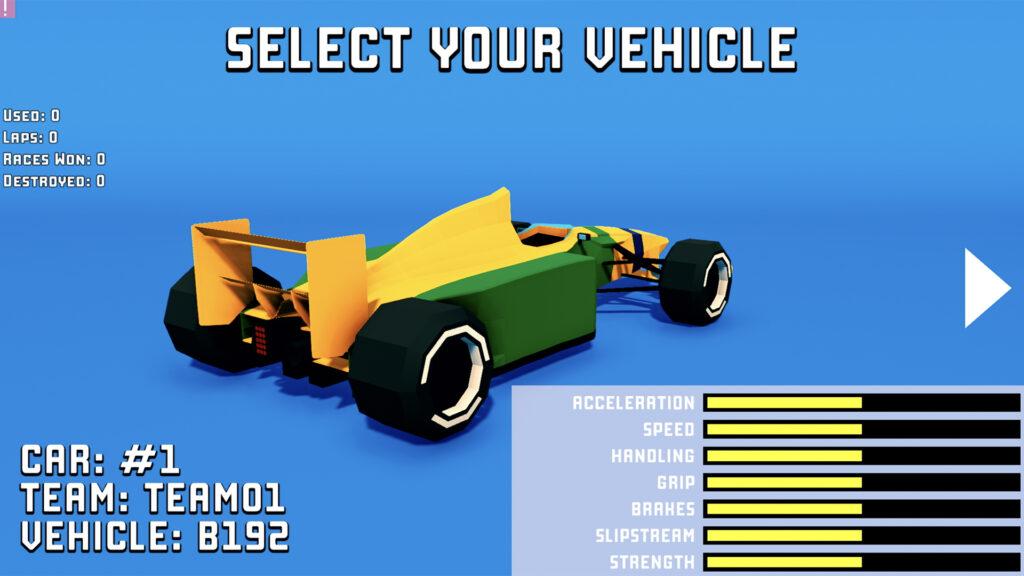The gaming world seems to have forgotten that magical moment in 1992 when Sega dropped arguably the most important racing game of all time: Virtua Racing.
Chucking around 180,000 flat-shaded polygons a second at 30fps, it ushered in the modern era of 3D driving games. Flat-shaded polys were very quickly superseded by texture-mapped polygons, and the gaming world has rarely looked back. But it does today.
Super Retro GP is an indie game built using Unity and it aims to present a 100% unofficial spiritual sequel to Virtua Racing.

So you get all the hallmarks of Sega’s early 90s racers including time bonuses, music stings, multiple viewpoints and sparks kicking up as your car bottoms out over bumps, while also taking advantage of modern features like force feedback steering wheel support and special effects.
Creator Steven Cawood is the man responsible for this ambitious throwback, and he’s clearly grasped what made Virtua Racing so great in the first place.
The periphery of the Super Retro GP experience is still very much under construction. That means the split-screen mode is listed but currently off-limits, along with Grand Prix mode.

However, many of the circuits – of which 9 are listed so far – are already functional in Arcade Mode, as are an array of early ’90s F1 cars.
You can recognise the McLaren MP4/4, the Williams FW16 and the Benetton B192, and there are several variants of each, all with different handling characteristics.
Already in place is an arcade mode complete with 20 cars on the track, along with a ghost mode for time attack and even an assortment of screen filters (192 at the current count!) which even includes a simulation of the original Game Boy’s colour palette. Daft but fun all the same.

The tracks design is looking strong, with Forest Falls Raceway echoing the Big Forest track from Sega’s classic, complete with an orange framed bridge, which you can now race under as well as across. There’s a sprawling oval track called Thunder Blaze Speedway, and a desert track called Sandstorm Motorplex.
Some tracks feature moments where you car actually leaves the ground for a moment, which means you’ll need to memorise where to brake in some places to avoid getting properly airborne.
The car handling while grounded is surprisingly close to AM2’s racer, though perhaps not as ‘digital’-feeling.

The brilliant Nintendo Switch conversion of Virtua Racing has extremely precise control, and while Super Retro Grand Prix has that precision available too, there is a slightly more organic feeling to the driving, like it’s an actual vehicle present in the game world.
What’s definitely one step up from 1992’s opus is the way you can lock your brakes here. That’s really cool, as it means you’re constantly looking for the limit of adhesion, which bodes well for time attack longevity. Perfect laps will take a lot of work to find, which is great.

We tried the game via Steam, which allowed us to play it on an nVIDIA RTX 2070-enabled laptop, already running the game nice and smoothly. But better yet, it already works really well on Steam Deck. The controls translate well to the analogue inputs of the Steam Deck and the screen resolution suits the flat-shaded style perfectly.
The default camera angle makes the game look exactly like Virtua Racing. It’s that kind of attention to detail that makes this a more exciting prospect than some other retro-styled modern racing games that often miss the point.
But for every classic nod, there’s also something new, like a simulated camera lens effect which sees lights in the tunnel showing up dirt on the virtual lens. Very cool.

The final thing to note is the damage modelling, which at present only extends to the player’s car. But it does so zonally, deforming according to where the car is struck by a barrier or rival car.
It stops short of having pieces break off (which is a shame – maybe wheels bouncing off is exactly what Virtua Racing 2 might have added), but damage as it is affects your handling for a few seconds, affecting your engine and sometimes leaving you trailing smoke from a damaged back wheel, until you pass the next checkpoint and your damage is reset.

The game is heading to PC first at some point later this year, followed by release on consoles thanks to Unity’s multi-platform support.
If this is anywhere near as good as its source material, this will be a must-play.
Fingers crossed it lives up to its massive potential.





















